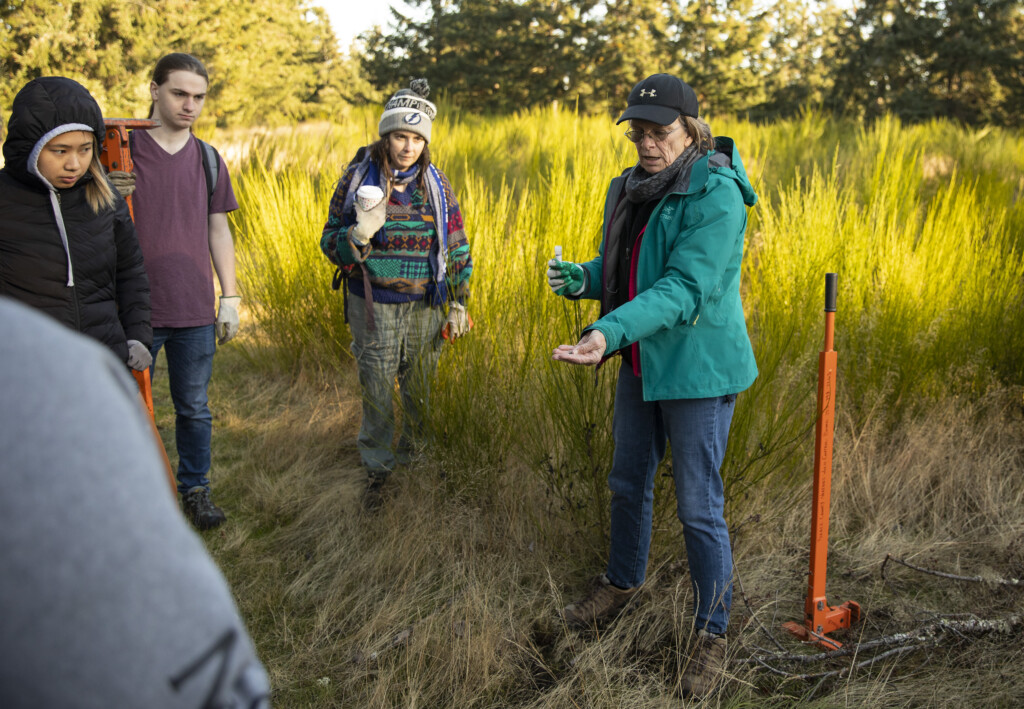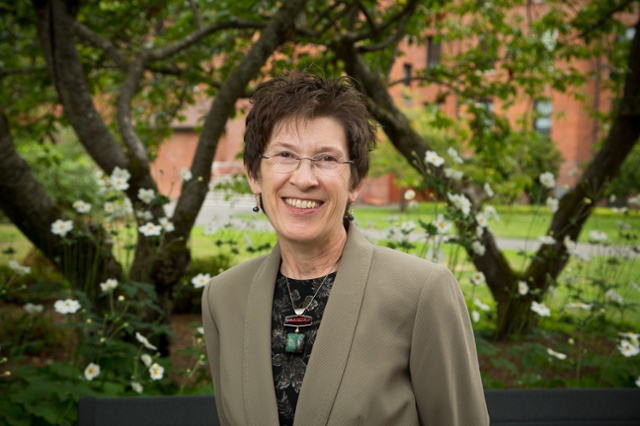Page 9 • (167 results in 0.021 seconds)
-
20 semester hours, including: EDUC 205: Multicultural Perspectives in the Classroom (4) NSCI 350: STEM Education Partnership (4) In addition, STEM Education minors must complete a minimum of 12
Partnership (4) In addition, STEM Education minors must complete a minimum of 12 semester hours in the following areas: Biology & Chemistry (4) 4 semester hours Choose from the following courses: BIOL 225: Molecules, Cells, and Organisms BIOL 226: Genes, Evolution, Diversity, and Ecology CHEM 104: Environmental Chemistry CHEM 115: General Chemistry I CHEM 116: General Chemistry II Geosciences & Physics (4) 4 semester hours Choose from the following courses: GEOS 102: General Oceanography GEOS 103
-
News for Pacific Lutheran University.
The Evolution of Behavior Assistant Professor of Psychology Corey Cook has received a Fulbright U.S. Scholar Award to serve as a visiting researcher at the Social Cognition Center Cologne at the University of Cologne in Spring 2022. Cook’s project, titled “Investigating the influence of fundamental motives on social cognition,”… November 12, 2021
-

Why biology at PLU? “There has never been a dull moment with this major. Whether it be in lecture or during a lab, I know I will gain knowledge and experiences that will only uplift my time at PLU. I will be honest, it can…
courses in ecology and evolution, cell structure and function, and physiology have given me a broad foundation of understanding that I can carry forward with me into my future work.” – Daniel What skills are you learning? “There are tons of skills that I have been able to gain during my time at PLU, and there are so many opportunities to learn new ones too! Some very important skills I have gained are teamwork and leadership. Through my job working for the biology department, and other clubs and
-

Benson Chair, Emeritus | Department of History | carpw@plu.edu | E.
Evolution of a Reformer: Jean Paton and the Early Decades of Sealed-Adoption Records, 1949-1980,” in Adoption & Culture, 3 (2012): 33-62 and “The Atheist and the Christian: Madalyn Murray O’Hair, Jean Paton, and the Stigma of the 1950s,” in The Journal of the Historical Society 12:2 (2012): 205-227. A third article, “Jean Paton, Christian Adoption, and Reunification of Families” was published in the Journal of Christian Legal Thought, 2:1 (spring 2012): 1-22 and can be read online at http
Contact Information -

By Sarah Cornell-Maier. Understanding the function of the human brain is a truly enlightening experience, especially when you tie brain research into the newest developments in computer technology, creativity, and innovation studies. Recently, I got the opportunity to sit down at Pacific Lutheran University with…
because of that there is a constant evolution of ideas and theories. “Innovative technology and innovative thinking have essentially created the subfield of Neuropsychology,” said McLaughlin. “We can actually go in and see neurons firing in a live human, which is incredible.” Why Innovation Studies is a Good Minor for Psychology Students Psychology as a major is fairly straightforward in a university setting. At PLU, for example, you study psychological theories and research methods while building
-

Shelia Smith, new Dean of the School of Nursing. John Froschauer, Photographer Liberal Arts and Nursing. A Perfect Match of Science and Compassion By Barbara Clements PLU Marketing and Communications Pacific Lutheran University’s new Dean of the School of Nursing, Dr. Sheila Smith, says she…
-educated and well-rounded,” she said. And PLU nursing graduates fit that definition. PLU graduates are well suited to deal with the increasingly difficult and complex evolution of the healthcare industry because their experience here teaches them to treat the whole person, rather than just the symptoms in front of them, Smith said. The applications for the slots available at the School of Nursing bear this out, with 300 applications submitted for the 80 available spaces in each yearly cohort group
-

Upcoming events for Black History Month 2017 at PLU ! Calendar sponsored by Black Student Union . 2017 Calendar of Events FEB 1; A Visual Display of PLU’s Black History Grey Area in the AUC PLU’s Campus Ministry office will present a month long visual…
History: Exploring the Works of African-American AuthorsAnderson University Center 34 – 4pm Join PLU’s English Honor Society as they celebrate and discuss some of the literary works of influential Black authors. All academic disciplines are welcomed. The selected readings will be available in Admin 201.FEB 25 The Evolution of Hip HopThe CAVE – 8pm Join BSU for our annual dance that will showcase Hip Hop from its early beginnings to today. This event will also serve as a celebration of Black History
-
Pacific Lutheran University School of Nursing embraces core values of: Compassion and kindness Competence Diversity, equity, and inclusion Excellence Respect and integrity Service Social Justice
pursue excellence and seek to participate in the evolution and expansion of professional roles. Shared Values and Guiding Principles We accomplish our work in the School of Nursing with attention to the vision, mission, and values of the SoN, University, and the discipline and profession of nursing. We actively pursue our development as a community devoted to learning and scholarship, collaborative engagement, growth, meaningful service, and love and compassion for all humankind.
-
Notched ladders are used by the Dogon people to access the upper levels of granaries, climb onto the flat roofs of houses, and bridge clefts in cliffs.
adapted masks and ceremonial dances to cater to tourists, and the natural evolution of their traditions to include new materials and characters has stagnated as a result of tourists desiring to see “traditional” Dogon life. The high prices that collectors and tourists are willing to pay for “traditional” Dogon art has also resulted in many of the oldest and finest pieces being sold away from Dogon country. In particular, a drought in the 1970s caused many Dogon to abandon rural villages and sell their
-
Biology is an adventure! It’s solving problems about living organisms. As a student of biology you must have a curiosity about living things and a foundation for questioning, exploring,
Structure and Function; and Ecology and Evolution. Students are also required to take Genetics as well as Zoological and Botanical offerings. Students may earn either the Bachelor of Arts or Bachelor of Sciences degree in biology. A minor in biology is also available. Students may also combine their biology studies with another major or minor to pursue multi-disciplinary interests like biochemistry or biostatistics, for example.FacilitiesThe modern Rieke Science Center supports students and programs
Do you have any feedback for us? If so, feel free to use our Feedback Form.


